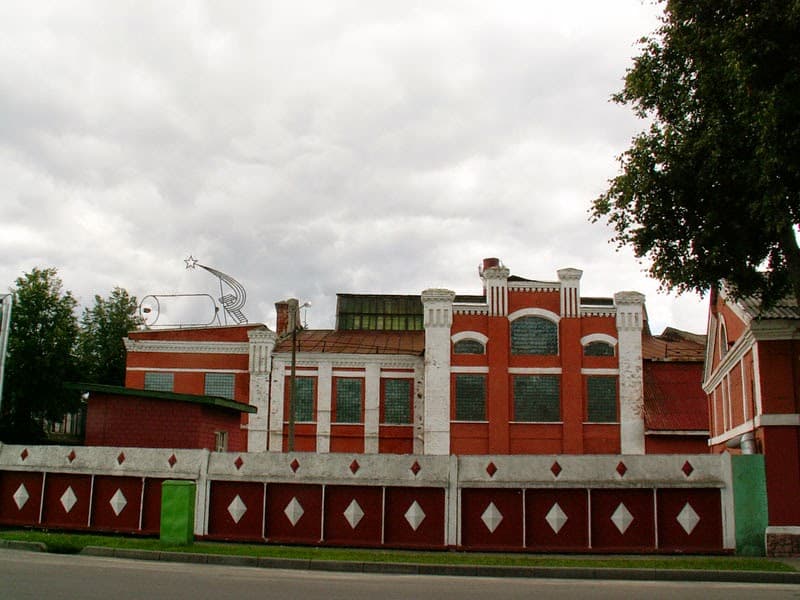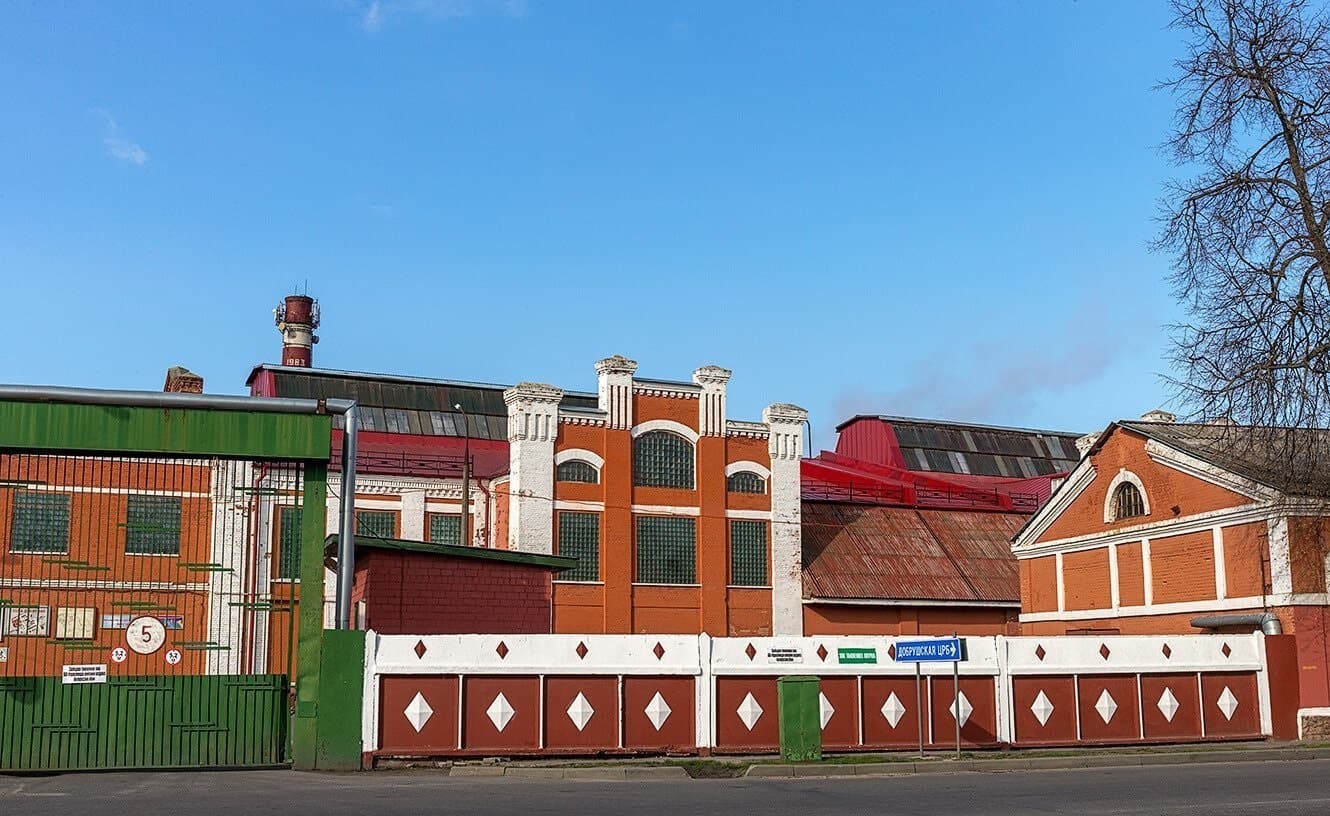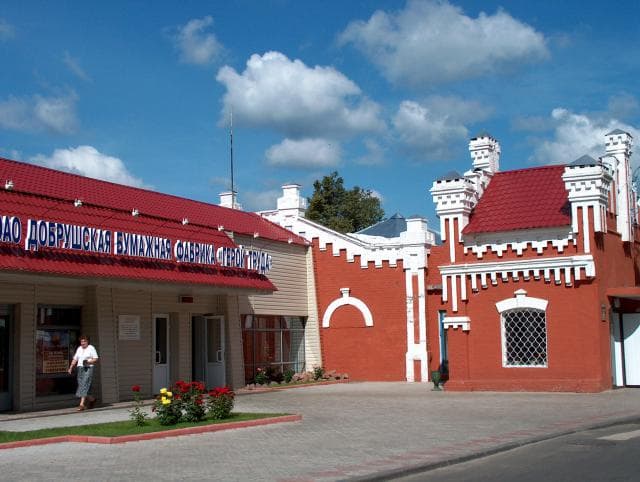Dobrush. A complex of paper factory buildings.
Landmark
Belarus, Gomel region, Dobrush, Lunacharsky Avenue, 8.
Description
The factory complex is a large enclosed area with one- and two-storey buildings built of red and white bricks. The complex is an example of industrial architecture of the 19th century, which has no analogue throughout Belarus. It was built by Prince of Warsaw, Count Fyodor Ivanovich Paskevich-Erivansky in 1870. The brick buildings are built in the style of modernism and Neo-Gothic and are protected by the state as a historical and cultural value of Belarus.
Categories
Historical
Architectural monument
Comments
Reviews to the Place
1Ольга Ерёменко
10.03.2025
The complex of paper factory buildings in the style of modernism and Neo-Gothic is protected by the state as a historical and cultural value.
The factory complex is located in the old part of Dobrush. It looks like a castle. In 1870, the factory was called "Dobrush paper factory of Prince Paskevich".
The central building, which houses administrative services, has an irregular layout system and an asymmetric spatial composition. The walls of the building are reinforced with flat blades, and small crenellated towers are located at the corners. The subsequent buildings are compositionally subordinated to the central building.
The single-storey buildings located around the perimeter of the factory are a kind of enclosure of the complex, the dominant composition of which is a high corner tower with semi-circular windows.
The facades of the building are laconic in decor, divided by flat blades. Under the eaves are belts of "crackers" (rectangular projections).
The decorative design of the entrance located in one of these buildings is more saturated: relief ornaments, arched window openings with skirting boards and a keystone. The architecture of the complex clearly traces the features of Neo-Gothic.
If you walk from the factory towards the railway station, you can still see the housing of factory workers from the end of the 19th century on the nearby streets. All of them are small and have a characteristic red and white color. Some of them were built in 1877 by the factory's managing director, Anton Stulginsky, for highly skilled workers. The owners had to pay back the cost of housing in installments from their salaries within 30 years. Stulginsky's own house was not preserved, it burned down during the war, but the fountain in his estate has remained in the factory park to this day.
Thanks to Stulginsky, the factory became one of the largest enterprises in pre-revolutionary Belarus and the second among the paper mills of the Russian Empire. She had no equal in terms of technical excellence and energy efficiency. Twice in 1882 and in 1896, the Dobrusha Paper Mill was awarded the All-Russian exhibitions with the right to display the state coat of arms on its products. A modern civilian infrastructure was created for the 19th century, which contributed to the transformation of Dobrush into a city.
The complex consists of several brick one-, two- and three-storey industrial and administrative buildings. The main building is located deep in the territory, with an entrance hall and one of the buildings facing the street facing the street. Through a one-story gallery, the administrative building is connected to a tall rectangular tower, a fire tower, which completes the spatial composition of the street building.
The preserved buildings of the 19th century were built in a pseudo-Gothic style, which stands out for its special richness of facade decoration.
The subtlety and proportionality of the architectural design of the facades, the high quality of the brickwork and decorative details, the harmony of the overall composition puts the factory in Dobrusha among the best monuments of Belarusian architecture.
In 2002, the complex of paper mill buildings was included in the State List of Historical and Cultural Values of the Republic of Belarus. The Dobrush paper mill is rightfully considered a veteran of labor, an industrial giant and the heart of Dobrush.






